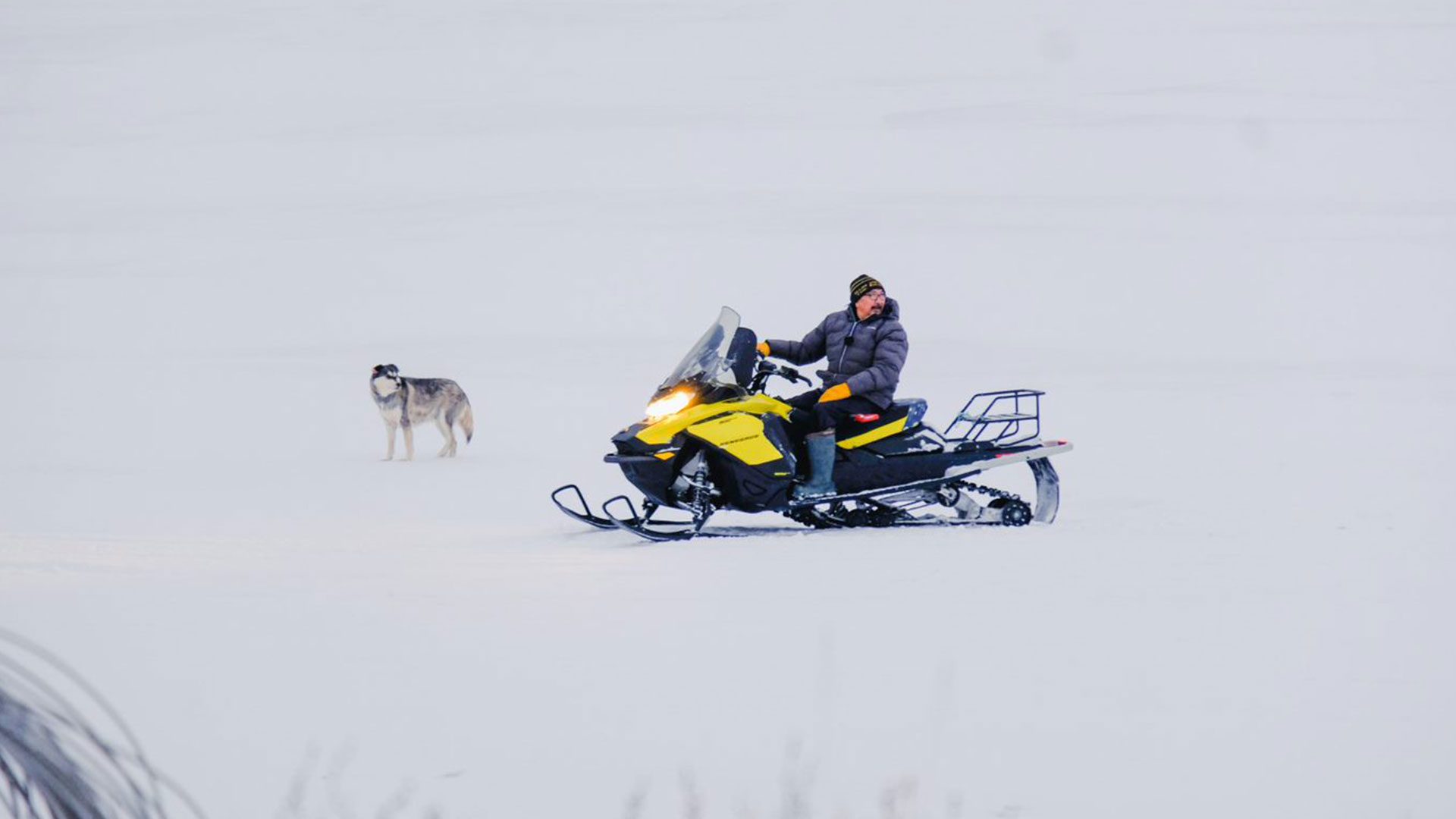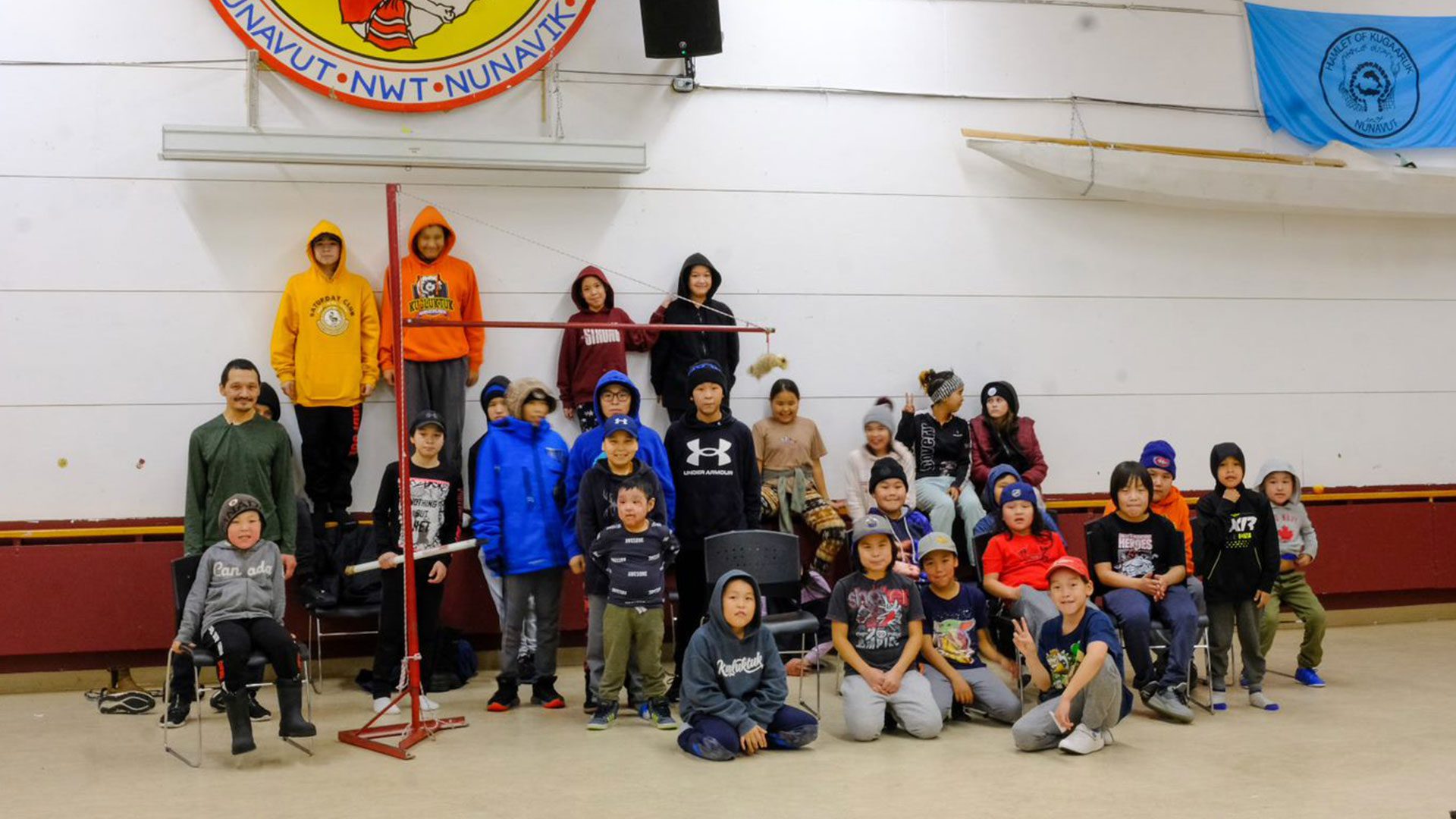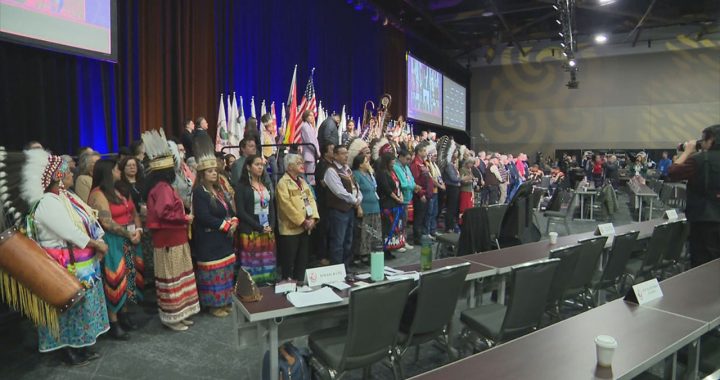Wesley Kamakyok, mutters a quick, good luck chant before he drops his line through a few feet of ice in the Coppermine River just outside of Kugluktuk. After all, he has a family of ten to feed.
“Sometimes you won’t catch anything, sometimes you will catch a lot and it all takes patience,” Kamakyok says. “Fish for us is life and five times a week we’ll have fish.”
Even though he’s competing with a nearby ringed seal, he may still catch Arctic Char, Coney, Whitefish, Cisco, Cod, and Devil Fish, to name a few.
“People fish, but no one seals no more,” he says. “A lot of people are into process and store food and just not as many people interested in seal hunting or seal meat anymore.”

In many Nunavut communities, processed food is often the cheaper option.
A full Arctic Char will run anywhere from $70 to $80.
But for generations, the Inuit economy has been based on traditional harvesting traditions.
In the roughly 1,600-person community of Kugluktuk, strong ties to the land mean sustenance providing food and materials for clothing, tools, games, and traditional art.
Located in western Nunavut along the Arctic Ocean and Coppermine River, the bay is a popular spot for locals to fish.
“We’ve been fishing all our life with our dad and our family. What we have known since we were little,” says Robin Atatahak, another local fisher out with her two young kids. “It’s part of a lot of people’s diet here especially we rely on it for a source of our nutrients.”
The land, water and sky provide, but braving Arctic temperatures requires top gear, and who best to craft it but the local artists of Kugluktuk.
“My mum and my granny sewed for me to have warm clothing to travel by Ski-Doo and sled, so I just want to carry on the tradition and make more modernized warm clothing,” says Jennifer Ongahak.
Ongahak is also an instructor for the four-month ilitaqsniq sewing program, operated by the Miqqut – Nunavut Literacy Program.
As a long-time seamstress, she reaped the rewards from added income and flexibility that sewing has provided her.
“I was a stay-at-home mom for years and it was hard to find something that I really enjoyed, and this is what I really enjoy,” Ongahak says. “These other ladies are moms too and we can all relate to taking some time to ourselves and taking a breather.”
She explains how crafting clothing involves more than just individual sewing. Her brother is a skilled hunter providing her with pelts and she’s also brought in elders to provide guidance in the course.
“The elders already passed on before I could show them everything I can do now, but it’s really important to learn and to keep this tradition going,” she says.
Megan Klengenberg, a gifted artist is busy crafting her own original pattern for Alaskan-style Kamiks.
She skillfully uses photos of her great-grandmother fashioned similar garb as her frame of reference.

Most of her time with a needle and thread is spent designing clothes for her four children, but recently she’s put her work up for auction for some extra cash.
“I’m kind of fussy with what I sell because people want it at a low price but it doesn’t match the material, the fur the time, they want an expensive parka for a very cheap price and that’s not okay,” Klengenberg says.
She says while there’s interest in Inuit art – it’s still largely misunderstood by Canadians who don’t grasp how important this resource is to Nunavummiut.
The cost of fur at the local northern store or Co-op is expensive with $400 for one Arctic fox pelt and $250 for the cheapest fur option – sealskin.

Kugluktuk has a longstanding history of craftsmanship surrounding copper, because of the copper sources along the shores of the Coppermine River.
Tools such as knives, arrowheads, spearheads, ulu blades, chisels and harpoons were an invaluable survival resource for hunting caribou, moose, muskox, wolverines, foxes and barren land grizzly bears.
But the effects of colonization and intergenerational trauma have posed many challenges for community members walking between two worlds and participating in a traditional economy.
According to 2019 Statistics Canada data, Inuit were nine times likelier to take their own lives than non-indigenous people with substance dependence a factor in those deaths.
The municipal government and local Kitikmeot non-governmental organizations have been advocating for land and culturally based programming for the health and wellbeing of Inuit.

Over in the local recreational centre, a sealskin ball sways back and forth suspended in the air by a string as excited shouts and cheers fill the gymnasium.
Two dozen youths are lined up eager to try two-foot high kick.
Dale Takogon, coach and former sports competitor explains how the beloved activity of arctic sports has been a cornerstone for athletic training.
“They were used to prepare the men back in the days for hunting and trapping and traveling,” Takogon says. “It was a test of strength and your endurance.”
Participation in arctic sports can also lead to cultural exchange opportunities, as athletes showcase their skills when travelling to other remote communities for competition.
Dale started the afterschool arctic sports program when he noticed the activities dwindling.
“The sports died out for quite a few years, but sports are important for kids the younger the better to build more muscle memory,” Taktogon says. “I thought I’d try and bring it back and get a team going again.”
The coach is hopeful athletes will try out for the 2024 Arctic Winter Games in Alaska.










